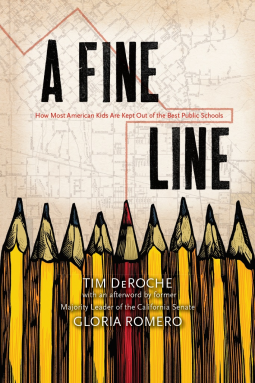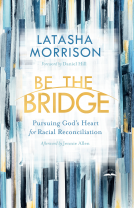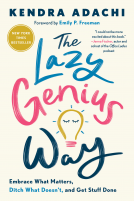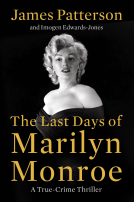
A Fine Line
How Most American Kids Are Kept Out of the Best Public Schools
by Tim DeRoche
This title was previously available on NetGalley and is now archived.
Send NetGalley books directly to your Kindle or Kindle app
1
To read on a Kindle or Kindle app, please add kindle@netgalley.com as an approved email address to receive files in your Amazon account. Click here for step-by-step instructions.
2
Also find your Kindle email address within your Amazon account, and enter it here.
Pub Date May 17 2020 | Archive Date Aug 15 2020
Talking about this book? Use #afineline #NetGalley. More hashtag tips!
Description
WHICH SIDE OF THE LINE DO YOU LIVE ON?
In 1954 the Supreme Court ruled that little Linda Brown couldn't be excluded from a public school because of her race. In that landmark decision in Brown v. Board of Education, the court famously declared that public education must be available to all on equal terms. But sixty-six years later, many of the best public schools remain closed to all but the most privileged families. Empowered by little-known state laws, school districts draw attendance zones around their best schools, indicating who is, and who isn't, allowed to enroll. In many American cities, this means that living on one side of the street or the other will determine whether you leave eighth grade on a track for future success or barely able to read.
In A Fine Line, bestselling author Tim DeRoche takes a close look at the laws and policies that dictate which kids are allowed to go to which schools. And he finds surprising parallels between current education policies and the redlining practices of the New Deal era in which minority families were often denied mortgages and government housing assistance because they didn't live within certain desirable zones of the city.
It is an extraordinary story of American democracy gone wrong, and it will make you question everything you think you know about our public education system.
Coming on May 17, 2020, the 66th anniversary of the Brown v. Board of Education ruling
Advance Praise
A worthy investigation into the root cause of public education failures in the United States. [DeRoche] writes especially well when articulating a rallying cry for change.
--Kirkus Reviews
An illuminating view of how school attendance-zone policies all too often reinforce the disparity associated with housing inequality. A must-read for education leaders, policy makers, parents, and anyone who believes that a child's zip code should not prevent them from accessing the best education that a school district offers.
--Tony Miller, former Deputy Secretary of Education under President Obama
Tim DeRoche offers a searing indictment of the way educational opportunity is distributed in America. Whether you agree or disagree with his particular solutions, DeRoche makes a powerful case that we must tear down the walls that exclude disadvantaged children from high-performing schools.
--Richard D. Kahlenberg, senior fellow, The Century Foundation
If you could redesign our system of public education, how would you do it? A Fine Line shows us where to begin. A brilliant exposé of so-called 'zip-code schools.'
-- Leslie Hiner, vice president of legal affairs, EdChoice
This is a rigorous account of why our schools are still separate and still unequal even six decades after Brown v. Board of Education. DeRoche digs up the little-known laws and policies that dictate which kids are allowed to attend the best public schools and who is left on the outside looking in. DeRoche asks the right question: What do we mean when we say that a school is public? This book will likely make you angry, but it also holds out the hope that one day even the best public schools will be open to everyone.
-- Gregory McGinity, former executive director of the Broad Foundation
The public school system is supposed to be society's great equalizer. In theory, access to a public education is supposed to help the least advantaged gain the skills necessary to achieve the American Dream. In practice, as Tim DeRoche points out, the traditional public school system actually exacerbates the inequities it was meant to cure. A child's school, and their future, depends on their zip code. But it doesn't have to be that way.
--Corey DeAngelis, director of school choice, Reason Foundation
An invaluable resource for parents. A Fine Line provides a thorough analysis of zip-code laws for every state, exposing the Education Apartheid that continues 66 years after the landmark Brown v. Board of Education Supreme Court case. DeRoche engages parents and gives them a voice in the vacuum that is education policy. Zip-code laws continue the injustice of Jim Crow laws. This book allows readers to educate themselves on the discrimination and redlining that children in the education system experience. Every child deserves equal access to a high-quality education.
--Mona Davids, founder and president of the New York City Parents Union
Marketing Plan
1. Extensive publicity campaign focused on national media
2. Reviews in major national publications and relevant scholarly journals
3. Social media push featuring maps and other figures from the book
4. Event appearances featuring author Tim DeRoche and Gloria Romero, former majority leader of the California State Senate
Available Editions
| EDITION | Hardcover |
| ISBN | 9780999277621 |
| PRICE | 26.95 |
Average rating from 41 members
Featured Reviews
When I began my student teaching experience in 2016, I started at a charter school in a Boston neighborhood. In discussions with the teachers about the unique issues they faced in their school community, many commented on the chronic tardiness and absenteeism due to the long commutes many of their students had. Many students chose to commute daily through the insanity that is downtown Boston transportation, by bus, by train, by car, by foot. Some students I talked to said their ride into school was usually more than an hour. All of these kids, and their families, made the conscious decision to add onto the daily stress that is high school mainly because they didn’t want to attend their neighborhood school, and wanted to pursue opportunities in the charter school system. I always found it depressing that they were not confident they could get a high-quality education in their own communities.
DeRoche helped me put a name to this practice: Controlled Choice. While not perfect, it’s still better than the alternative, DeRoche claims: attendance-zones drawn arbitrarily by school officials, often excluding people of color or those who are in the lower class. While I was aware of the level of segregation occurring nationally in our cities, DeRoche clearly articulated and visualized these issues in a digestible and logical way. Utilizing the term “educational redlining,” DeRoche compares how today’s practice of drawing street-level boundaries for school attendance zones essentially recreates maps that are eerily similar to those that were used 60+ years ago to discriminate against minorities when it came to home mortgages. Many often share similar shapes to counties affected by gerrymandering! These archaic practices are some of the main contributing factors to the inequality in public education in our country’s largest cities, an inequality based largely on race and social class.
DeRoche writing style is clear and digestible through, and I was easily able to access this content throughout the text. Usually I get lost in the statistics, numbers, and legal issues surrounding topics such as this, but I found the entire book approachable and understandable. The strongest aspect of this work is that rather than simply outlining all of the elements that are wrong with the current system, DeRoche addresses what can be done to approach solutions. He acknowledges that his recommendations will not fix the system overnight, but will start to move the cogs in the bureaucratic machine.
After reading this book, I’ve found myself thankful that in my current district, we utilize a lottery system rather than these discriminatory attendance-zone doodles. Like many cities across America, the disparity between neighborhoods, even streets, as DeRoche proves, can be alarming. While this issue is not immediately relevant to my community of students or my district (at the moment), I have been excited to find ways to integrate what I’ve learned into my curriculum. I plan on using this when I teach A Raisin in the Sun -- since we already discuss redlining, this is the perfect way to make students more knowledgeable about what is happening in other cities close by in 2020. I have already suggested this book to two of my colleagues in two separate departments, and will continue to do so.
 Cristi M, Reviewer
Cristi M, Reviewer
When my oldest child was 5 we decided it was time to buy a house. Both my husband and I were in our late 20's and just starting out so we didn't have a huge budget to spend so we ended up in a town with a school district I was aprehensive about, and I still am not a huge fan of 7 years later. The school I had wanted her to attend was literally 5 minutes down the road, but the houses on that side of town were astronomically more expensive. I feel kind of dense now, but I never really realized until I read this book that housing prices can be directly related to the type of public school your child will end up attending and it is infuriating! There are definitely some discrepencies in the public school system in the United States and A Fine Line lays them out for you. It is evident a lot of research has been put into this book and a ton of thought has been put in by the author about how to fix these problems. We didn't get into the school we wanted and we are not in a financial struggle. There are people with far less that have even worse choices in bigger inner city school districts. Unfortunately I think it will be an uphill and very long battles, but the more people that are educated about these unfair practices, the more people that can join the fight to remedy them.
 Elizabeth E, Librarian
Elizabeth E, Librarian
I have read several books about why schools are failing and what we can do about it, but this is the first time I've read about the lines that keep families from making choices about what public school their child is able to attend. DeRoche includes maps that highlight how attendance boundaries within districts still reflect the lines that were used decades before to discriminate against minority groups attempting to get mortgage financing. Today the students who live on the "wrong" side of the boundary are largely minorities. In many cases these attendance boundaries do not even mean that students go to the school closest to their homes, though many state laws say that students are supposed to be assigned to the closest school. In fact DeRoche even outlines how families could push back against these boundaries by looking closely at the laws. While he spends most of the book discussing attendance boundaries within large districts he does devote a chapter to boundaries between districts. His solution to the boundary problem is controlled choice for families, which could be the ability to apply for any school in the district, which is not a perfect solution but if done correctly could be fairer. The ideal solution would be system where every school could deliver a quality education.
DeRoche was occasionally repetitive in his writing, as he reinforced the issues boundaries create. The book is thoroughly researched, and he includes examples from large districts across the nation.
This book brought to mind a documentary I recently watched that highlighted this equity gap: Our Kids: Narrowing the Opportunity Gap - Episode 2: Four Cities Tackle The Child Equity Gap https://mediapolicycenter.myshopify.com/collections/our-kids-narrowing-the-opportunity-gap
This is an important look at an educational issue that seems to only be getting worse. I received a digital galley from NetGalley.
 Media/Journalist 652998
Media/Journalist 652998
Amazing historical analysis of how our education system has been racially segregated in the 20th century, which has left a legacy of policies that continue to live on today. Very eye-opening how schools are funded and zoned to be along racial and class lines, despite what we may believe is supposed to be an equitable system.
 Reviewer 562052
Reviewer 562052
Excellent book. Great data and info and not dry! I am a Principal and have been in education for several years. While this information was not new, it was a great reminder!
 Stacy S, Reviewer
Stacy S, Reviewer
This book is informative. It’s also important for people not vested to get an idea of why this is such a hot button issue. He gave great examples from all over the place with great insight from people living it.
 Kyle E, Reviewer
Kyle E, Reviewer
The author does a fantastic job outlining what redlining is, why it is appalling, and how it has persisted in this country for decades. The author then takes this data and applies it to current attendance zones and school systems across the country. The data is eyeopening, and widespread. But as I was reading, I kept waiting for solutions to the problem and how we could improve our education system. Sadly, very little beyond modeling our school system after the charter school system and bringing lawsuits against the school districts was offered.
I wanted more on why successful schools succeed and why failing schools fail. I wanted an exploration of what the author's school system lottery would look like in practice. Would the lottery even out school performance, or would it just shuffle who was fortunate enough to attend the successful school? Would the lottery account for siblings or school employees? What if every student in a district applied for the same school? Once you "win" the lottery, are you in for the duration or is it a year to year function? Is there a feeder school or once you finish the preferred elementary school, you enter a new lottery for middle school, and the same for high school? When students leave the school midyear, do you draft the next available student to the preferred school?
I would have loved more exploration of the concept of address swapping and more evidence of political corruption creating disparate attendance zones. More information on how districts and local governments fund schools would have strengthen the arguments within this book as well. Could a correlation between the successful schools, race, and government funding be established? Or is there proof of parental influence? Are there any public schools that currently use a true open enrollment model and how does this policy influence performance?
While I felt that this book ultimately falls short in this conversation, it is a strong starting point in the discussion, the information throughout gives the reader plenty to think about, and offers some good resources for further research/discussion moving forward.
 pattie m, Librarian
pattie m, Librarian
This is a very difficult topic - handled well in this book. As a former school board trustee and parent concerned and involved in my child's education as well as all those in our schools district - I've seen up close what inequality in schools is and what it costs those mistreated by it. However - I'm not sure that changing archaic districting rules is the place to put effort. Would we not be better served to fight for equality of schools and education? If these things were equal - district lines would not be such an issue.
Well written and thought provoking.
 Reviewer 250689
Reviewer 250689
A very in-depth look at the legality of school attendance zones within school districts that prevent some students from accessing higher-performing schools and being forced to attend low-performing schools. Should a person’s address keep them from receiving a quality education and the opportunities that come from it? Full of examples of educational discrepancies in public schools around the country and potential solutions that involve legislative changes.
One part of Tim DeRoche's "A Fine Line" is a book that discusses the laws that have and continue to shape access to quality public schools, primarily within large urban districts. The other part of the book is DeRoche's ideas for how to increase access to "elite" public schools to those who are historically and currently placed in failing schools. As a resident of Philadelphia, I am very familiar with how parents with means purchase houses in specific neighborhoods to give their children access to higher quality public schools. I did learn a lot though from the information about the connection between redlining, attendance zones, and the overall quality of schools. It was also interesting to read about how this dynamic plays out in other large cities. While I do agree that DeRoche presents a strong argument for how we can attempt to legally enforce more open access to the select high quality public schools, it seems like he is really focused on opening access to the few greats schools vs. making all of the schools in a district great. Absent from this book was a thorough discussion about how different school funding formulas cause inequality among neighboring districts. Also absent from DeRoche's argument are ways to address many of the issues that plague students in failing schools in urban districts - high ACE scores, low teacher retention, homelessness & food insecurity, neighborhood violence, and centuries of oppression. What really drew the line as far as a rating is concerned is how the afterward for this book ended with an argument pushing for charter schools, which are often equally segregated, mismanaged, and also underperforming.
A FINE LINE:How most American Kids are kept
out of the best public schools
Tim DeRoche
I received this on my Kindle for the purpose of review from Net Galley. As I started the book I was
thinking the man is just attacking public schools and education models in U.S. While he has the documentation to prove what he says I was disturbed by the truths he shared. It is in transparency that I share, we homeschooled five children who have families, hold jobs and are outstanding citizens.
Zip codes matter as school assignments are made and no doubt where our children attend school can make a difference. However, I believe more than zip codes and neighborhoods the home is the biggest difference maker. There are always a few that despite the challenges, make big differences in their sphere positively.
All that said, too long and too many details which seem to come from New York. A great school can be had but the most important thing is for the home life to be top notch.
Pointing out challenges with no true solutions helps no-one.
 Jennifer M, Librarian
Jennifer M, Librarian
I received an ARC from NetGalley and Redtail Press in exchange for my honest review.
Sixty-six years after the landmark Brown v. Board of Education case changed the face of segregated schools, it turns out that not all that much has really changed to equal the playing field for our children's educations. Arbitrary lines are now being drawn to edge out the already under-privileged families.
The facts presented in this are disheartening to say the least and seeing the attendance zone maps is disturbing. How is this something that is still being allowed in 2020?
I would not only recommend this book for your library collection, but I urge everyone to read it themselves.
 Educator 524849
Educator 524849
Wow, it's a little eerie that this book would come out at such a time as this. I stumbled on this information shortly before finding this book. It feels like it was something that's always been intuitively known, but it's a very different thing to see the historical reasons why.
 Wendy H, Educator
Wendy H, Educator
I really enjoyed this book. I learned a lot and it was very illuminating. It highlights inequities in our public school system that I hadn't really thought too much about. Really opened my eyes to these disparities in our educational system. Something has to change in public education. The system is rapidly becoming unsustainable.
 Geoff U, Educator
Geoff U, Educator
This was book was equal parts interesting, infuriating, and puzzling. It makes a very convincing argument that both district boundaries and within-district school boundaries serve to keep poor children out of elite schools, distort housing markets (by $100s of thousands of dollars for houses in "good" school areas), fall afoul of equal protection under the law, and lead to outrages like school districts hiring investigators to spy on families and verify addresses and parent being charged with felonies for wanting to send their kids to a goo school. By taking examples from numerous cities it shows that many (most?) of these boundaries are based on redline housing boundaries created to prevent minority communities from receiving home loans! And often kids from poor communities are prevented from going to successful schools that are actually closer to their homes.
The last third of the book was a discussion of the types of legal arguments and counterarguments that might be successful in State and Federal courts. This might be interesting if you're a policy or constitutional law junkie but was less compelling for me.
The author clearly convinced me this was a major issue, so I was surprised that he spent little time on solutions. He only briefly discussed the idea of district-wide lotteries as have been used for places in charter schools. The other interesting thing was that this was continuously framed as an issue of poor and minority students being unfairly excluded from high performing schools and relegated to low performing schools. But he spent no time at all exploring how to improve low performing schools, which seems like it would make the districts issue moot. Admittedly, I don't know anything about the science or politics of school performance, but it was a curious omission.
An interesting read about a troubling US injustice.
We still live in a country where zip code can determine destiny. A Fine Line explores the educational system and how zoning lines can determine the quality of opportunity. This is a book for policy makers, educators, and parents alike.
Many thanks to NetGalley, the publisher, and the author for providing me with a copy in exchange for an unbiased review.
Thank you netgalley for providing this ARC in exchange for an honest review.
This is a very eye opening social political book on the segregated public school systems that utilize location to keep lower income students from attending. The author reveals how public school administraters in conjunction wealthy families force families from lower incomes to select schools of lower caliber just because they live on the wrong side of the street. This reveals the cracks in the system and the desperate need for reform. Children should have equal access to education regardless of where they live.
Overall well written and illuminating.
 Nancy F, Reviewer
Nancy F, Reviewer
How Communities Bias School Availability
It’s no secret that most parents want the best education possible for their children. The excellence of the school in a community can influence the parents’ choice of where to purchase a house. If they have the means they will opt for the community with the best schools.
DeRoche points out that lines are drawn in communities indicating which areas are serviced by which schools. He believes this is unfair and points out some ideas such as lotteries that could function to give all students a chance to attend the best schools. This is possibly one solution to the problem. However, it doesn’t address other issues about under-performing schools. One problem is often the lack of parental involvement, another is that teachers often prefer the better schools and hence the better students.
At one point forced busing was touted as a solution to the problem. However, it was unpopular with many parents who wanted their children to remain in the neighborhood as well as expensive.
This is an interesting book, well-written and easy to follow. His solution has been tried in some areas and can be made to work. However, I think the book misses the big picture focusing on one aspect of the problem.
I received this book from Net Galley for this review.
The author did a great job of informing the reader of the inequality when it comes to education in America. Schools claim to allow access to all children, but there is a definite division in who gets the best resources. Sadly, there is not enough people advocating for equal education and things won't change anytime soon. I have worked in schools that have had everything needed to foster success and then I have worked in schools where everything is breaking and out of date. It is sad when you know that there are students that have the potential to do great things but will not because of the education they are given.
 Linda B, Reviewer
Linda B, Reviewer
A Fine Line raises many questions and gives food for thought. It is a book meant to be read and digested slowly.
People want to think that our education system is doing a great job providing quality education for all students, and unfortunately that is not the case. There are still large inequities that are plaguing the school systems and it is time to start taking considerations for change seriously. Our young people deserve it.
Although I teach toddlers in an early childcare center, and not children at a public school, I was intrigued by the topic of this book, especially in light of last year's college admission's scandal. You may have seen news stories about parents arrested for enrolling their child in a public school with a 'fraudulent' address. DeRoche addresses this - how public schools and neighborhoods are zoned, state and city laws and policies on public education and school enrollment, and why the current system isn't working.
Right now in the United States of America, states provide public schools for all children. This is not established in the Constitution by the way. It's a state-established right, via state constitutions. All 50 states do provide public education but the actual requirements and expectations vary by state. DeRoche gives examples from specific state constitutions so we can see exactly the wording and the promises givenre publicly provided education . Then he looks at specific schools in certain cities and which local families are allowed to send their children to the neighborhood school and which families and children are denied. Yes, children are allowed to be denied attending the school closest to their home while students who live further away are allowed, even encouraged, to attend that same school. Typically, white (usually) middle upper class families are zoned for the good schools while everyone else is zoned for the school that are falling apart or performing poorly. Some of the zoning rivals the gerrymandering seen for electoral purposes in their absurdity and inherent inequality.
Using specific examples, (though the names of some families have been changed), official records, and state laws as well local laws and policies, DeRoche looks at how and why this happens and the legalities, or lack thereof, of these actions. He examines the impact of racism, redlining, politics, and money. He questions why schooling is based on our neighborhood. We are allowed to choose our place of worship, our doctor, our grocery store, and even our work, regardless of where we live so why are public schools the exception? He examines how this approach benefits some schools while harming others, and looks at the games that schools and parents engage in in order to attract the 'right' students and attend the 'right' schools. Most parents want what is best for their children and sometimes that leads to outrageous behavior such as paying an extra $100,000 or more for a house in a good school district only to find out, too late, that they live on the wrong side of the street. No, that's not hyperbole or exaggeration. Some towns and cities get that specific about school zones and boundaries. say I live on the east of Main Street; my kids go to the high-performing school a mile away while my friend across the street has to send their child to the poor-performing school down the block. What sense does that make? And this is why families game the system to get their children into a desirable public school. And this results in some schools vigorously policing family addresses and residences. Hell, some even hire private investigators to follow children and make sure they go home to the address on record. Some schools even will make impromptu visits to a child's home to verify they really live there, even checking to see they have a toothbrush there. Yeah, this book raised my blood pressure quite a bit.
DeRoche's writing is occasionally dry but that's due more to the subject matter than his ability to write. He did extensive research and every chapter has footnotes; some have graphs or maps. At the back of the book are several indexes and a bibliography. He cites court cases and rulings, interviews, articles, etc. I admit, my brain fried a little reading it all. I found that I needed to read a chapter or two then take a break; Sometimes the break was days long and at other times it was shorter, an hour or so. I can't deny that the book was an eye-opener and it certainly gave context to the news stories concerning parents who are arrested for 'fraudulently' enrolling their child. DeRoche offers possible legal and legislative solutions for changing how schools determine who attends. He acknowledges that fixing the zoning won't fix other existing problems with out school systems. Then again, those other problems weren't his focus.
I recommend this book to anyone with a concern for our educational system, fairness, or equality of access to public education. It's well worth reading, regardless of whether or not you have children.
Ah, they are tempting to get on my why we homeschool soapbox. Instead, I'll direct you to this book, which explains in detail the very flawed unfair system of who qualifies for the best education in the United States. The author focused on big-city school districts (zip code determines your school choice in most areas), and I'd add that rural areas see the same discrepancies. You don't have to be fluent in Edu-Speak to understand and exactly why our system needs a revamping. In other words, if you think the system is fair, you are probably white, urban, and upper income. That isn't to say that poor people don't have other problems, but education is a logical way to improve society as a whole.
Readers who liked this book also liked:
Benjamin Stevenson
General Fiction (Adult), Humor & Satire, Mystery & Thrillers
James Patterson; Imogen Edwards-Jones
Historical Fiction, Mystery & Thrillers, True Crime
Jakub Politzer (Illustrator), Christina Dumalasova (adapter), Katerina Horakova (adapter)
Comics, Graphic Novels, Manga, General Fiction (Adult)


















